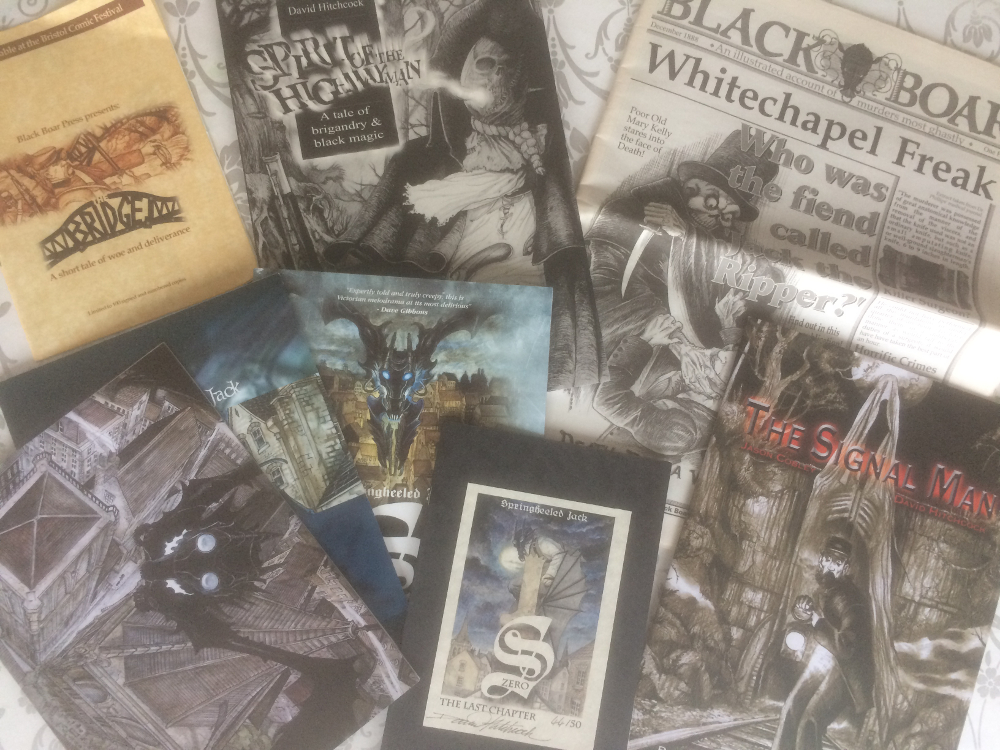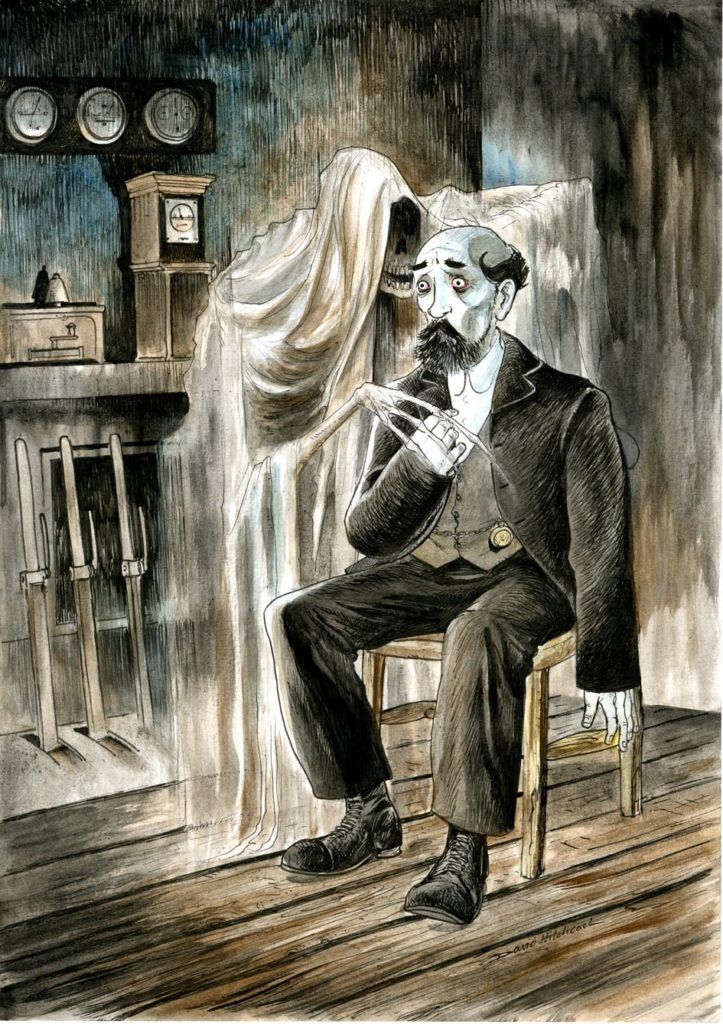Many years ago, before a mortgage, car payments and childcare ate away all my disposable income, I was lucky enough to be able to read and collect a healthy amount of British small press comics. Back around 2002-2005 my favourite creators were Martin Eden, David Baillie, the Etherington Brothers and in particular David Hitchcock.

Hitchcock’s comics always stood out from that prestigious crowd; he specialized in gothic period horror, but managed to make each subsequent title distinct and unique. A particular treat was Whitechapel Freak, a horrific embellishment upon the Jack the Ripper mythos, which was printed in oversized format on newspaper print paper, reminiscent of a Victorian era London broadsheet. With each comic I got, I could see a marked evolution in penmanship, presentation and storytelling, and by the release of the 3-part steampunk vigilante miniseries Springheeled Jack, Hitchcock had mastered the craft; with acute characterization, dizzying forced perspectives, gothic lighting and ingenious page compositions. I think one year (maybe 2003?) I sent out a group feedback email to a listing of my favourite creators, and Hitchcock rewarded my efforts with a mention in the inner cover of Springheeled Jack issue 2!

Which brings me up to a few weeks ago, when I was lucky enough to get ahold of one of Hitchcock’s more recent works; an adaptation of the Charles Dickens’ horror short The Signal Man. Working from a script by fellow small press veteran Jason Cobley, this tells the tale of a rail worker in 1866, whose duties are to man the signal box at the mouth of an isolated and uncanny tunnel. The sanity of the unnamed protagonist appears to be slipping, as he recounts encounters with ghoulish phantoms within the tunnel, each linked to morbid deaths or tragedies on the trainline.

Hitchcock’s signature art style is pen embellishments over hyper dense pencil texturing, so every inch of the page is covered in black or grey. It creates a claustrophobic effect that immerses the reader in every scene; accentuated in this case by the oversized magazine-format printing, such that the darkness of the tunnel fills up the entire field of vision. The characterization of the titular Signal Man shows the continual terror etched into his face, as the deathly figures materialize from the shadows and reflections around him. The fluidity of Hitchcock’s art is amazing, with the specters appearing to creep and flit around the pages in front of the reader’s very eyes. Death literally permeates through this entire book, and by the time I turned to the last page, the chilling final imagery gave me actual goosebumps (although I was reading it on a train at night time).

Credit should also go to Cobley’s script, which played to Hitchcock’s storytelling strengths, and did not clutter the beautiful pages with redundant expository text. An afterword by Cobley also provides some fascinating contextual info on how Dickens originally came to write the story, which only adds to the poignancy of the comic. I’d really strongly recommend getting ahold of some of Hitchcock’s work, particularly if you’re a fan of horror in any medium; comics are available from the man himself, and he can be contacted through facebook for The Signal Man, Springheeled Jack and for general artwork (check out the latter link to see some of the jaw-dropping commissions that he regularly posts).


Pingback: Frankenstein Texas – This Week Gordon Has Mostly Been Reading…